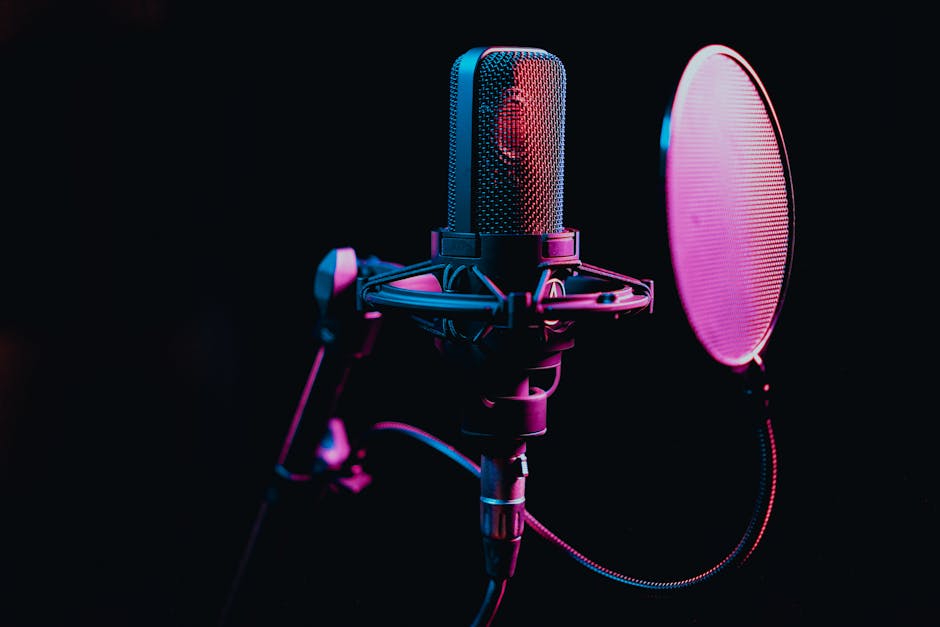My Review of Podcast Cover Art Design Tools and Services.
My Review of Podcast Cover Art Design Tools and Services
In the vast, ever-growing ocean of podcasts, standing out is less about shouting the loudest and more about making a memorable first impression. And let’s be honest, before anyone hears a single word of your brilliant content, they see your podcast’s cover art. It’s your show’s visual handshake, its billboard, and often, the deciding factor for a potential listener to hit play or scroll past. As someone who’s launched a few shows and advised countless others, I’ve spent considerable time navigating the complex world of podcast cover art design – both through DIY tools and professional services. This isn’t just a theoretical exercise; this is my hands-on, boots-on-the-ground review of what works, what doesn’t, and where your valuable time and money are best spent.
Navigating the Visual Frontier: My Journey into Podcast Cover Art Creation
My quest for the perfect podcast cover art began with a simple question: “How hard can it be?” The answer, as I quickly discovered, depends entirely on your design acumen, budget, and expectations. Initially, I approached it with a DIY mindset, believing that with enough YouTube tutorials and free software, I could conjure up something decent. My early attempts were… enthusiastic, but often lacked the polish and professional touch needed to truly grab attention in a crowded podcast directory. This experience taught me that while passion is crucial, visual storytelling requires a specific skill set.
I quickly realized that podcast platforms like Apple Podcasts artwork requirements and Spotify for Podcasters image guidelines have specific technical specifications (like size, resolution, and color profiles) that aren’t just suggestions – they’re critical. Ignoring these leads to blurry, pixelated, or incorrectly cropped images, which instantly diminishes your show’s credibility. My journey evolved from simply “making an image” to understanding the strategic importance of visual branding for my podcast.
Unpacking the DIY Design Toolkit: My Experience with Self-Service Platforms
For many independent podcasters, budget is a major consideration. This naturally leads to exploring do-it-yourself (DIY) design tools. I’ve spent significant time with several of these, and here’s my honest take on the most popular ones:
Canva: The Podcaster’s Best Friend (with Caveats)
Canva is often the first stop for anyone dabbling in graphic design without formal training, and for good reason. Its drag-and-drop interface is incredibly intuitive, and it boasts a massive library of templates, stock photos, icons, and fonts. In my testing, I found Canva to be excellent for:
- Speed: You can whip up a basic cover art design in minutes.
- Ease of Use: Absolutely unparalleled for beginners. No steep learning curve.
- Templates: A huge variety of pre-designed templates, many specifically for podcasts, give you a strong starting point.
- Cost: The free tier is surprisingly robust, though the Pro version unlocks premium features like brand kits, background remover, and more stock elements, which I found invaluable for consistency.
However, my experience also highlighted its limitations. While easy, the sheer popularity of Canva means some elements and templates can feel generic. Achieving a truly unique, standout design requires significant effort in customization and combining elements in novel ways. I often found myself spending more time trying to make something look less like a template. For a truly distinctive brand, Canva might serve as a foundation, but rarely the complete solution on its own.

Adobe Express (formerly Spark): A Strong Contender for Adobe Ecosystem Users
If you’re already in the Adobe ecosystem (Photoshop, Illustrator, etc.), Adobe Express offers a familiar interface and surprisingly powerful features for a web-based tool. It’s a step up in complexity from Canva but still very accessible. My key takeaways:
- Integration: Seamless if you use other Adobe products, making asset transfer easy.
- Design Power: Offers more granular control over design elements than Canva, allowing for a slightly more polished look if you know how to use it.
- Font & Icon Libraries: Robust, with high-quality options.
- Learning Curve: Slightly steeper than Canva, but still manageable for motivated beginners.
I found Adobe Express particularly useful when I needed to quickly adapt existing brand assets or incorporate specific fonts that might not be readily available elsewhere. It felt like a more “professional” DIY tool, but it also demanded a bit more design sensibility from my end.
GIMP/Photopea: For the Dedicated DIYer on a Budget
For those with a bit more technical proficiency and absolutely no budget for paid tools, open-source options like GIMP or browser-based alternatives like Photopea offer powerful image manipulation capabilities similar to Photoshop. My take:
- Control: Unmatched control among free tools. You can do almost anything Photoshop can do.
- Cost: Free. Period.
- Learning Curve: Extremely steep. This is not for the faint of heart or those short on time. Expect to invest hours in learning tutorials.
While I appreciate the power, I personally found the time investment required for GIMP to be prohibitive for simple cover art unless I was already proficient in similar software. Photopea is a great browser-based alternative if you need quick Photoshop-like edits without the download, but again, it requires prior knowledge.
The Professional Touch: My Deep Dive into Freelance and Agency Services
After experiencing the limitations of DIY, especially when aiming for a truly unique and impactful visual identity, I shifted my focus to professional design services. This is where the “My Review” aspect truly shines, as I’ve hired designers through various platforms and learned a great deal about the process.
Freelance Marketplaces (Fiverr, Upwork): The Cost-Effective Pro Route
Platforms like Fiverr and Upwork are teeming with talented designers offering their services at various price points. My experience has been a mixed bag, but overwhelmingly positive when approached strategically:
- Variety: An incredible range of styles, prices, and experience levels. You can find someone for almost any budget.
- Speed: Many freelancers offer quick turnarounds, sometimes within 24-48 hours.
- Communication: Direct communication with the designer is key. I learned to be very clear with my brief, provide examples, and offer constructive feedback.
- Cost: Highly competitive. I’ve secured excellent designs for as little as $30-$50, though higher-quality designers naturally charge more ($100-$300+).
The trick here is vetting. I always look for designers with strong portfolios, excellent reviews, and clear communication skills. I also recommend starting with a small project or a clear, detailed brief to minimize




Post Comment